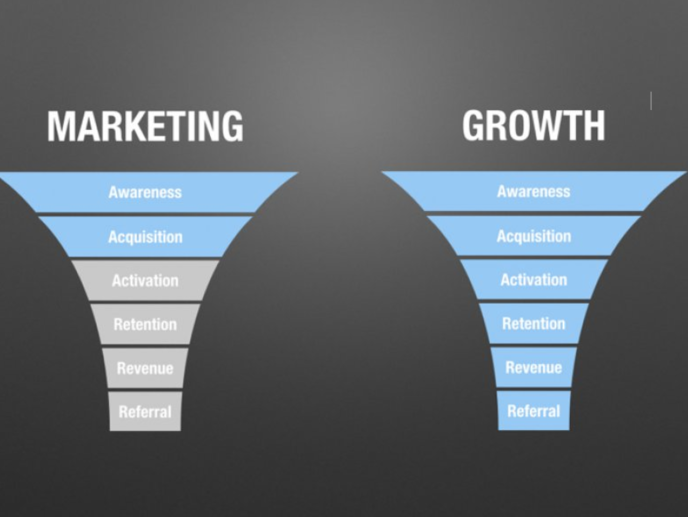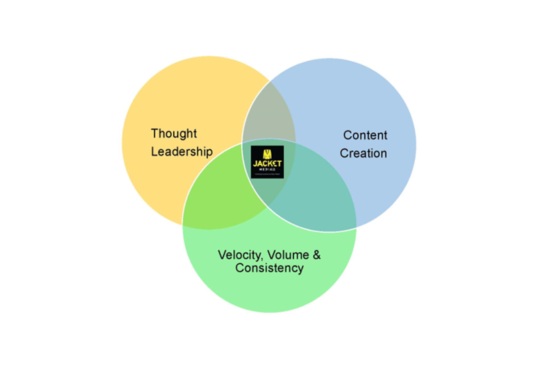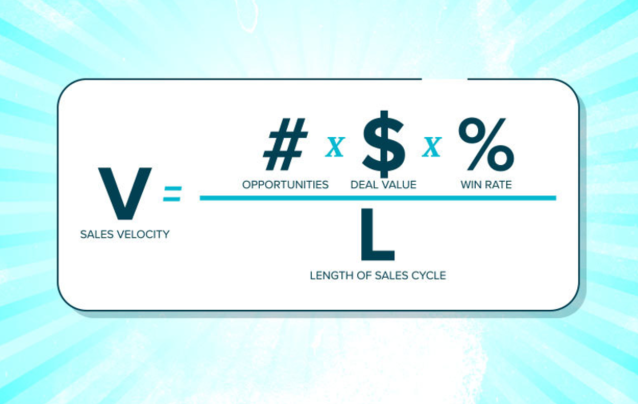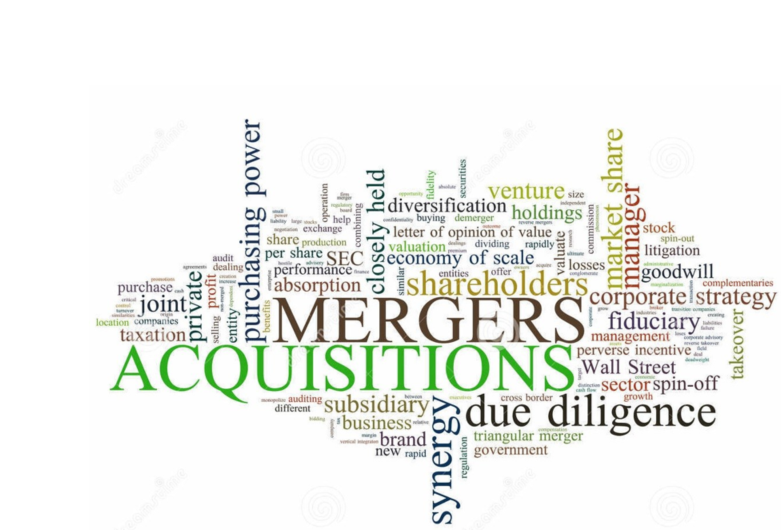by Lew Weiss, founder of Jacket Media Co, host of Manufacturing Talk Radio and publisher of Manufacturing Outlook.
I’m so old I remember Yellow Pages and rolodexes. I’m so old that a directory was a published book with a spine. The landscape of the industrial media has changed so much over the past 50 years; it is time to reflect where we were, where we are, and most importantly, where we are going.

With daily newspapers and many monthly B2B publications gone, the frequency and velocity of industrial news, economic information, vendor specifications, and site selection has caused tectonic shifts. These earth shaking changes leave a media landscape without full case studies, probative thoughtful investigative journalism, and have been replaced with a ‘swipe up’ on the ubiquitous cell phone. The attention span for content assimilation is measured in seconds at worst, minutes at best.
No longer is content consumed as a form of education, professional development, or comparative analysis. Solution-seekers perform a Google Search, find matches based on the algorithms of search engine optimized rankings. There is no triangulation. Top ten rankings constitute information gathering, little else. Out of sight, out of mind.
This is neither good nor bad; it is. In this vast media paradigmatic shift, survivors of the media miasma live by the maxim: eat or be eaten. Many in the media have failed to look ahead. Many keep running content that could have been authored twenty years ago. No contemporaneous insights, contexts, or prognostications are offered. Just more of the same.

Balancing media coverage: forward thinking and providing a microphone
by Thomas R. Cutler, who founded the 9000+ member Manufacturing Media Consortium in 1999 and has authored more than 8000 articles in that time span; he has been working with Jacket Media Co for some time as a regular contributor to our most popular publication Manufacturing Outlook. Cutler brainstormed with Lew Weiss and contributed to the report which follows. Tom has seen all the media shifts, the transition to a wide variety of content, webinars, YouTubes, and yes, TikTok.
Beyond predictive analysis and analytics, media is more than editorial opining. In fact, the questions to examine are who wants media coverage and why?
Profit-based media outlets including Jacket Media Co must balance the editorial trend-spotting with those of paid sponsors, content contributors, and podcast hosts/guests.
New venture-capital (VC) funded companies are a prime user of the current industrial media complex. Whether affiliated with artificial intelligence (AI), machine learning (ML), or Industrial Internet of Things (IIoT), these companies must clearly capture mindshare and market share among an interested audience. Industry 4.0 is another example where aligning company objectives with the best-practice technology becomes an effective use of media outlets. The influx of VC money in industries, particularly those impacting manufacturing, material handling, and fulfillment, have garnered several billions of dollars in the past two years. Suddenly, these new companies appear at countless tradeshows, yet too often fail to leverage those lead generation events with credible editorial content. VC funded manufacturing organizations will spend upwards of $1M on each tradeshow; the ratio of media coverage must average 12-30% spend.
Similarly, companies in mergers and acquisitions (M&A) have a relevant story to tell yet too often do little other than a single press release announcing the new entity. Much is lost when the rationale for the M & A is given short shrift. A great public spokesperson must be a guest on a myriad of podcasts, offer guest columns in a variety industrial publications, and offer updates about the impact of the acquisition for customers. It is too important to view these events as transactional. The rationale for acquisition, the lessons learned, and the role of the newly merged organization adds texture for customers and potentially future acquisition targets. A media spend for a year following a merger or acquisition is critical to ensure that the market sees it was a sound business decision with a deeper explanation versus a cursory press announcement.

Anyone hired into a C-Suite position must make a name for themself. They become part of an industrial leadership that is synonymous with the company brand and messaging. They have both a professional and personal vested interest in being known, respected, and part of the value-added proposition of the organization. They achieve this by becoming authors of thought-leadership feature articles, guests on podcasts, as well as keynote speakers and panelists at conferences and tradeshows. Thought leadership is fairly new nomenclature yet the industrial complex is more than the technology offered, more than the products manufactured…it is the people, the vision, the mission that must be articulated with velocity, volume, and consistency. Obstacles for accomplishing this are detailed below in this exposé.
The function of marketing has changed. It used to be building brand and product awareness and acquiring lead generation, particularly through digital and traditional methodologies. The marketing role is far more engaged in the B2B industrial complex responsible for bottom-line growth and an integral part of the ‘sales AND marketing’ effort. Salespeople are rarely responsible for following up with prospects except via LinkedIn or those about to issue a purchase order in 90 days. They are bonused and rewarded on closed activities, not advancing the longer-term sales pipeline.

The media kit is dead (or should be)
Every fall until COVID, magazines, news publications, conferences, and more media outreach vehicles had a media kit which included a media calendar. No more. Sure, there are a few anachronistic examples which still prevail that look like rehashed versions of a 2010 editorial calendar. The fluidity of world events makes the media kit obsolete.
Two years ago, few spoke about supply chain disruption, the Russian attack on Ukraine, oil prices, inflation, ‘the great resignation,’ cybersecurity challenges, and high-level robotics to solve workforce challenges. Now those topics are omnipresent. Any media calendar that was prepared in Fall of 2021 would have missed all these topics.
All editorial content has multiple purposes for the readers, the publishers, and the companies (paying sponsors). Ultimately, most want to know how manufacturers can succeed now and improve moving forward. To state the obvious, potential disruptions to industrial business operations keep growing every day. There is (and will continue to be) a shortage of skilled workers. Risks are rising and difficult to mitigate. Supply chain disruptions are coming from all locations (promulgating the conversation of nearshoring).
A growing number of manufacturers are thriving in this challenging environment. They are adopting smart manufacturing techniques, working with the needs of the supply chain, attracting and retaining a quality workforce, and making business processes faster.
And still these best-practice operations are failing to tell their stories. They are failing to profile their leaders, and they are failing to use the new media methodologies that all GenZers have grown up with and utilize for hours a day. This failure to connect with the new generation of communication, portends a dismal outlook without immediate corrective action.
The most significant factor in limiting the media messaging in the industrial sector is time. Great thought leaders, experienced marketing managers, and digital social media mavens, have too much on their plate and regularly drop the ball on one or more important functions of an integrated marketing campaign.
The integrated campaign is more than a check list of “to-do” activities on Google calendars by all involved. Too much focus is placed in the day-to-day and too little focus on the notion of a campaign. Mapping a calendarized plan is essential. The combination of advertising, podcasts, webinars, tradeshows, industry events, feature article editorials, press releases, direct mail campaigns, and social media, represent a cumulative effort which drive on-going branding, messaging, awareness, and lead generation. All of these campaign elements drive the Google search results, which as referenced earlier, are paramount.
The current state of manufacturers’ marketing efforts is a hodge-podge of activities and actions. They are not a strategic campaign. Since time is the constant constraint much of that can be sourced to effective, savvy, and experience content creators in the industrial sectors. These are not PR folks who will take on any client and offer vanilla services. These are journalists and industry experts who are able to convert companies’ thought leadership into publishable content. All the great content, YouTubes, podcasts, and publications that are not seen do little to advance the cause of manufacturers looking to create definitive value propositions and clear differentiation from competitors.
Rationale for media outreach integrated campaigns for the industrial sector
 The future state of industrial media
The future state of industrial media
The future state in a value stream map MUST consist of velocity, volume, and consistency. So many industrial firms have social media accounts that are barely used. DMs (direct messages) are not answered with alacrity. Following and followers are not vetted, scrubbed, and added to with regularity. Prospects on the CRM are not included in social media activity. Potential customers’ content must be retweeted. Salespeople must follow target customers on LinkedIn.
Velocity is understood by operations managers as the rapidity of motion such as the time rate of change or position of a body in a specified direction. Velocity is the rate of speed with which something occurs. Applying that concept to media messaging, the rapidity of action and reaction can (and must be) quantified. Whether Google search results, analytics, lead generation, frequency of inquiry, and of course, conversion to sale, these are metrics which are analyzable.
These are not IIoT Big Data, nor do they require extensive business intelligence algorithms. Running Google analytics will quickly inform senior industrial managers what is working. Likewise, if the sales pipeline increases ten-fold and conversion to sales lags behind, the constraint can be quickly identified and corrected.

Volume may seem self-explanatory; it is not. The frequent lament among sponsors and advertisers is that the marketing-spend did not convert to sufficient inquiries nor new sales. This goes back to the utilization of media content. Back in the ‘olden days’ (pre- 2000) verified subscribers was the gold standard. Nowadays few read content consistently, rather they search by topic (not only by Google, but also by Twitter searches). The volume is measured by the push of content, not pull. In the past, there was an assumption that a feature article in a marquis publication such as IndustryWeek, would axiomatically drive so many eyeballs to content and convert to a percentage of inquiries. Currently, prospects in the industrial sector respond when there is a problem. Prospects proactively seek solutions using search engines. They may need to watch a YouTube video, then listen to a podcast, then see a topic such as robotic automation in a myriad of media outlets before taking the next step. Volume means that the problem a manufacturer is solved when found (experienced: watched, heard, read, some element of engagement).
Consistency is the single most important variable in the industrial media market now and for the foreseeable future. One cannot be in an airport and fail to retweet. One cannot issue one press release a month; Cutler’s motto is that if a manufacturing enterprise is open for business today, they have something to say today. Periodic efforts, such as announcing a new product, service, or new hire, produces futile and half-hearted results. Such haphazard sporadic communication efforts are actually deleterious. They provoke the customers to ask why nothing new has been presented and question the company’s stability. The division of labor (in house or by a third-party agency) to accomplish consistent message is vital.
The answer is on the phone
While so much has changed for those of us 55 and older, the utilization of media by Millennials, GenZers, and now Generation Alpha has been on their cell phone for most of their lives. They have never heard of CDs, 8 tracks, or albums. They consume media at a volume, velocity, and consistency unimagined previously. They swipe up with a ferocity capturing bits of knowledge. We know the fate of the dinosaurs. Dynamic, agile, and creative media remains exciting and fun for those of us committed to communicating and reporting the trends in the industrial complex.















